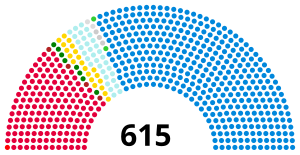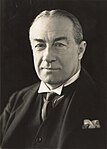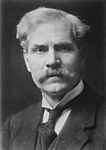1935 United Kingdom general election
| |||||||||||||||||||||||||||||||||||||||||||||||||||||||||||||||||||||||||||||||||||||||||||||||||||||
All 615 seats in the House of Commons 308 seats needed for a majority | |||||||||||||||||||||||||||||||||||||||||||||||||||||||||||||||||||||||||||||||||||||||||||||||||||||
|---|---|---|---|---|---|---|---|---|---|---|---|---|---|---|---|---|---|---|---|---|---|---|---|---|---|---|---|---|---|---|---|---|---|---|---|---|---|---|---|---|---|---|---|---|---|---|---|---|---|---|---|---|---|---|---|---|---|---|---|---|---|---|---|---|---|---|---|---|---|---|---|---|---|---|---|---|---|---|---|---|---|---|---|---|---|---|---|---|---|---|---|---|---|---|---|---|---|---|---|---|---|
| Turnout | 71.1%, | ||||||||||||||||||||||||||||||||||||||||||||||||||||||||||||||||||||||||||||||||||||||||||||||||||||
| |||||||||||||||||||||||||||||||||||||||||||||||||||||||||||||||||||||||||||||||||||||||||||||||||||||
 Colours denote the winning party—as shown in § Results | |||||||||||||||||||||||||||||||||||||||||||||||||||||||||||||||||||||||||||||||||||||||||||||||||||||
 Composition of the House of Commons after the election | |||||||||||||||||||||||||||||||||||||||||||||||||||||||||||||||||||||||||||||||||||||||||||||||||||||
| |||||||||||||||||||||||||||||||||||||||||||||||||||||||||||||||||||||||||||||||||||||||||||||||||||||
The 1935 United Kingdom general election was held on Thursday 14 November. It resulted in a second (though reduced) landslide victory for the three-party National Government, which was led by Stanley Baldwin of the Conservative Party after the resignation of Ramsay MacDonald due to ill health earlier in the year. It is the most recent British general election to see any party or alliance of parties win a majority of the popular vote.
As in 1931, the National Government was a coalition of the Conservatives with small breakaway factions of the Labour and Liberal parties, and the group campaigned together under a shared manifesto on a platform of continuing its work addressing the economic crises caused by the Great Depression. The re-elected government was again dominated by the Conservatives, but, while the National Liberals remained relatively stable in terms of vote share and seats, National Labour lost most of its seats—including that of leader Ramsay MacDonald.
The Labour Party, under what was then regarded internally as the caretaker leadership of Clement Attlee, was the main beneficiary of the swing away from the Conservatives and National Labour. The party achieved its then-best-ever result in terms of share of the popular vote, and won back around half of the seats it had lost in the previous election. The Liberals, who had split from the National Government over the issue of free trade, continued their decline, losing more than half of their seats (including that of leader Sir Herbert Samuel).
The election ushered-in an era of two-party politics dominated by the Conservatives and Labour, which would last until the revival of the Liberals in the 1970s under Jeremy Thorpe. It was also the first election since 1895 where the Independent Labour Party stood separately from the Labour Party, having disaffiliated in 1932. In Scotland, it was the first general election contested by the Scottish National Party, and the Communist Party gained its first seat in ten years (West Fife).
Due to the outbreak of the Second World War in 1939 the next general election was not held until 1945. It was also the last election to be held during the reign of George V, who died in January 1936.
Background[edit]
National Labour leader Ramsay MacDonald had led the National Government since its victory in 1931, but the Conservatives were by far the largest party within the coalition, with 470 of its 554 seats. MacDonald's health was increasingly poor throughout his time as Prime Minister, and in June 1935 he handed his office to Conservative leader Stanley Baldwin.
After the near-wipeout of 1931 saw Labour leader Arthur Henderson lose his seat, George Lansbury became the party's new leader. However, as a radical Christian pacifist he strongly opposed rearmament, putting him at odds with his party's membership, his own MPs, and many of the party's affiliated trade unions, all of whom had begun to view investing in the UK's military capabilities as a necessary response to the rising threat of European fascism.[1]
This disagreement came to a head at Labour's annual conference in October 1935, where a motion was tabled for the party to endorse sanctions against Italy for its invasion of Abyssinia. Lansbury opposed the motion, but when it passed he decided that his position was untenable and he resigned on 8 October. Baldwin, recognising that the government's main opposition was in disarray and seeking a mandate for his new administration, called an election on 19 October, and Parliament was subsequently dissolved on 25 October.[2] Without time to choose a new leader before the general election, Lansbury's deputy, Clement Attlee, was appointed interim leader.[1]
As in 1931 the election was dominated by the impact of the Great Depression—in particular persistently high unemployment—and the National Government sought to continue its program of reforms designed to repair the economy.[3] However, foreign policy and defence were significantly more important than in the previous election, with the role of the League of Nations, the increasing belligerence of the Empire of Japan, the remilitarisation of Germany under Adolf Hitler, and the Italian invasion of Abyssinia all key issues. There was a heated internal debate within the National Government over the extent to which rearmament should be pursued in response to the rising threat of another war in Europe.[4] Baldwin was generally opposed to rearmament, and the coalition's manifesto reflected his position, promising that rearmament would be "strictly confined to what is required to make the country and the Empire safe."[5][3]
The Liberal Party had fractured into three separate factions in 1931 over the question of whether to support the National Government's policy of trade protectionism, and it remained just as divided over economic policy in 1935. Lacking financial resources, the party was only able to put up candidates in 159 constituencies.[6]
Outcome[edit]
The election resulted in another landslide for the National Government, with two-thirds of the seats in the House of Commons and a narrow majority of the overall popular vote. This was a less-dominating performance than in 1931—where the coalition had won two-thirds of the vote and 90.1% of seats—but it was still a clear mandate for the National Government to continue its program of economic reforms.
It remains the most recent election where any party or alliance of parties secured a majority of the popular vote. (The coalition between the Conservatives and Liberal Democrats which formed after the 2010 general election represented 59.1% of votes cast, but the two parties campaigned separately). Despite Labour's success in terms of vote share—higher than Ramsay MacDonald's result in 1929, Harold Wilson's in February 1974, and Tony Blair's in 2005, all of which put the party into government—its total of 154 seats remains its most-recent worst performance, and the party has won more than 200 seats at every general election since. Attlee won Labour's subsequent leadership election on 26 November 1935, and he would go on to become the first Labour leader to both win a plurality of votes in a general election and a majority of seats in the House of Commons (in 1945).
The election also marked the continued decline of the Liberals from a natural party of government into a fringe third-party within a two-party system dominated by the Conservatives and Labour. It was the last time the party would win more than ten seats at an election until 1966, and the last time it would win more than 20 before its alliance and merger with the Social Democratic Party in the 1980s. The National Liberals within the government, meanwhile, struggled in the following years to differentiate themselves from their coalition partners, and the party's small rump of MPs were absorbed into the Conservatives in 1947.
The resulting parliamentary term would see two changes of Prime Minister: Neville Chamberlain took over from Baldwin in 1937, and subsequently formed a new cross-party wartime coalition—which included the Labour and Liberal parties—in 1939 at the outbreak of the Second World War. Chamberlain himself resigned in 1940 and was replaced by Winston Churchill. Due to the war another general election was not held until Allied victory was confirmed in 1945.
Results[edit]

| Candidates | Votes | ||||||||||
|---|---|---|---|---|---|---|---|---|---|---|---|
| Party | Leader | Stood | Elected | Gained | Unseated | Net | % of total | % | No. | Net % | |
| National Government | |||||||||||
| Conservative | Stanley Baldwin | 515 | 387 | 5 | 88 | −83 | 62.9 | 47.8 | 10,025,083 | −7.2 | |
| National Liberal | John Simon | 44 | 33 | 5 | 7 | −2 | 5.4 | 3.7 | 784,608 | 0.0 | |
| National Labour | Ramsay MacDonald | 20 | 8 | 1 | 6 | −5 | 1.3 | 1.5 | 321,028 | 0.0 | |
| National | N/A | 4 | 1 | 1 | 4 | −3 | 0.2 | 0.3 | 53,189 | −0.2 | |
| National Government (total) | Stanley Baldwin | 583 | 429 | 12 | 139 | −125 | 69.8 | 51.8 | 11,183,908 | −15.4 | |
| Opposition | |||||||||||
| Labour | Clement Attlee | 552 | 154 | 105 | 3 | +102 | 25.0 | 38.0 | 7,984,988 | +7.4 | |
| Liberal | Herbert Samuel | 161 | 21 | 3 | 15 | −12 | 3.4 | 6.7 | 1,414,010 | −0.3 | |
| Ind. Labour Party | James Maxton | 17 | 4 | 4 | 0 | +4 | 0.7 | 0.7 | 136,208 | N/A | |
| Independent Liberals (UK, 1931) | David Lloyd George | 5[7] | 4 | 0 | 0 | 0 | 0.7 | 0.3 | 67,653 | −0.2 | |
| Nationalist | Thomas J. Campbell | 2 | 2 | 0 | 0 | 0 | 0.3 | 0.2 | 50,747 | −0.1 | |
| Ind. Republican | N/A | 3 | 0 | 0 | 0 | 0 | 0.0 | 0.2 | 46,715 | N/A | |
| Ind. Nationalist | N/A | 2 | 2 | 0 | 0 | 0 | 0.3 | 0.2 | 33,527 | N/A | |
| SNP | Alexander MacEwen | 8 | 0 | 0 | 0 | 0 | 0.0 | 0.2 | 29,517 | 0.0 | |
| Ind. Conservative | N/A | 3 | 0 | 0 | 0 | 0 | 0.0 | 0.1 | 29,475 | N/A | |
| Communist | Harry Pollitt | 2 | 1 | 1 | 0 | 0 | 0.2 | 0.1 | 27,177 | −0.2 | |
| Independent | N/A | 5 | 2 | 1 | 0 | 0 | 0.3 | 0.1 | +0.1 | ||
| Independent Labour | N/A | 1 | 0 | 0 | 0 | 0 | 0.0 | 0.1 | 14,867 | 0.0 | |
| Liverpool Protestant | Harry Longbottom | 1 | 0 | 0 | 0 | 0 | 0.0 | 0.0 | 6,677 | 0.0 | |
| Independent Progressive | N/A | 1 | 0 | 0 | 0 | 0 | 0.0 | 0.0 | 6,421 | N/A | |
| Social Credit | John Hargrave | 3 | 0 | 0 | 0 | 0 | 0.0 | 0.0 | 10,376 | N/A | |
| Plaid Cymru | Saunders Lewis | 1 | 0 | 0 | 0 | 0 | 0.0 | 0.0 | 2,534 | 0.0 | |
| Agriculturalist | N/A | 1 | 0 | 0 | 0 | 0 | 0.0 | 0.0 | 1,771 | N/A | |
| Christian Socialist | N/A | 1 | 0 | 0 | 0 | 0 | 0.0 | 0.0 | 1,480 | N/A | |
Votes summary[edit]
Seats summary[edit]
Transfers of seats[edit]
- All comparisons are with the 1931 election.
- In some cases the change is due to the MP defecting to the gaining party. Such circumstances are marked with a *.
- In other circumstances the change is due to the seat having been won by the gaining party in a by-election in the intervening years, and then retained in 1935. Such circumstances are marked with a †.
Constituency results[edit]
These are available on the Political Science Resources Elections Database, a link to which is given below.
See also[edit]
- List of MPs elected in the 1935 United Kingdom general election
- 1935 United Kingdom general election in Northern Ireland
References[edit]
- ^ a b Beckett, Francis (1998). Clem Attlee: A Biography. Blake. ISBN 978-1860661013.
- ^ "Parliamentary Election Timetables" (PDF) (3rd ed.). House of Commons Library. 25 March 1997. Retrieved 3 July 2022.
- ^ a b Dale, Iain; Nfa, Iain Dale (2 October 2012). Volume One. Conservative Party General Election Manifestos 1900-1997. Routledge. p. 53. ISBN 978-1-134-62577-2.
- ^ Thackeray, David; Toye, Richard (2021). Age of Promises: Electoral Pledges in Twentieth Century Britain. Oxford University Press. p. 77. ISBN 978-0-19-884303-0.
- ^ Middlemas and Barnes (1969). Baldwin: a biography. Weidenfeld and Nicolson.
- ^ Sloman, Peter (2015). The Liberal Party and the Economy, 1929-1964. Oxford University Press. p. 105. ISBN 978-0-19-872350-9.
- ^ Includes Percy McDougall, who was not formally endorsed by Lloyd George's group, but used the same Independent Liberal label while running in Manchester Rusholme
- ^ Tetteh, Edmund (1 February 2008). "Election Statistics: UK 1918–2007". parliament.uk. Retrieved 5 May 2018.
- ^ The seat and vote count figures for the Conservatives given here include the Speaker of the House of Commons
Further reading[edit]
- Craig, F. W. S. (1989), British Electoral Facts: 1832–1987, Dartmouth: Gower, ISBN 0900178302
- Fry, Geoffrey K. (1991), "A Reconsideration of the British General Election of 1935 and the Electoral Revolution of 1945", History, 76 (246): 43–55, doi:10.1111/j.1468-229X.1991.tb01533.x
- Stannage, Tom (1980), Baldwin Thwarts the Opposition: The British General Election of 1935, London: Croom Helm, ISBN 0709903413






